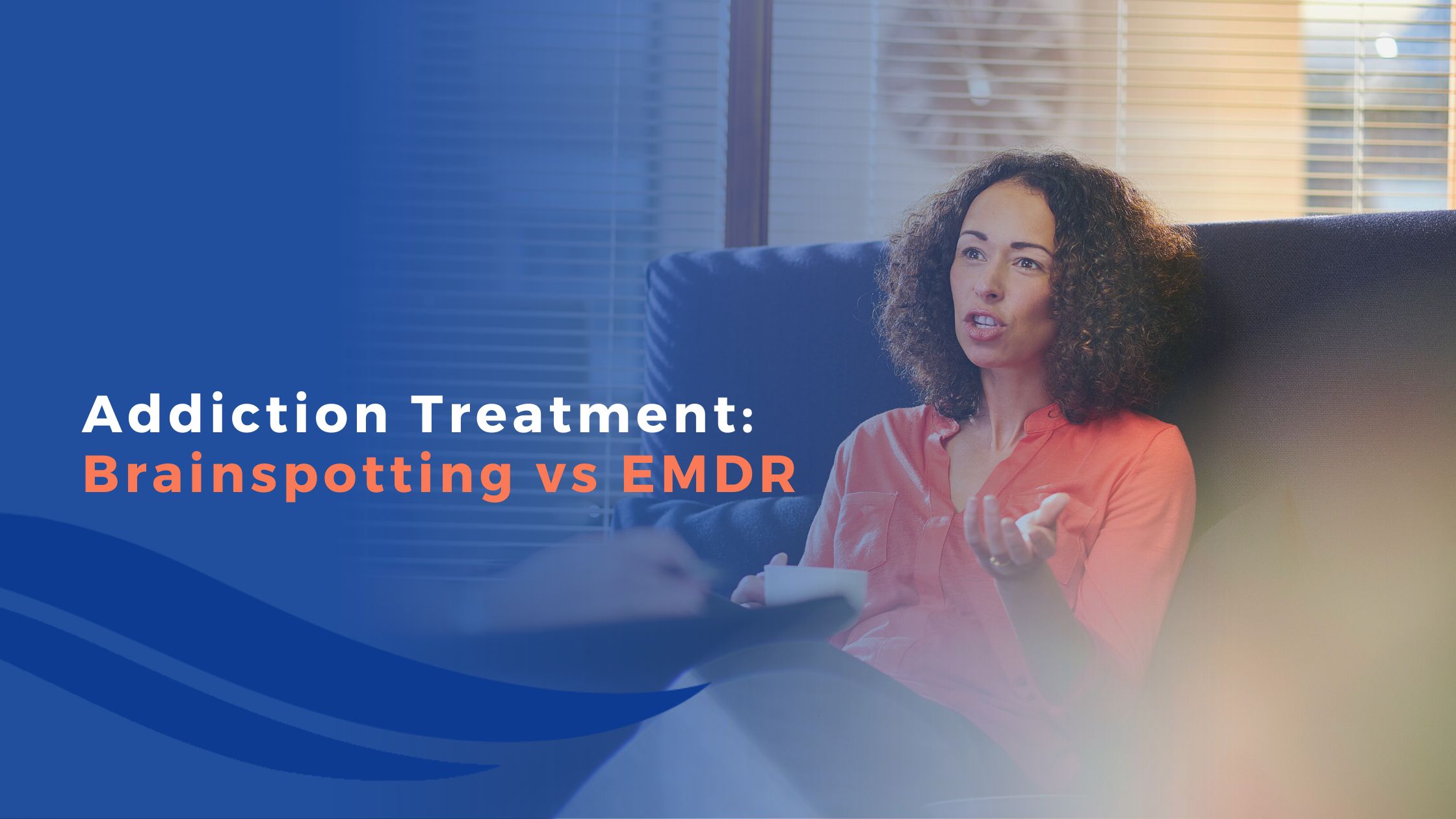Addiction Treatment: Brainspotting vs. EMDR


Written By
DreamLife RecoveryEye Movement Desensitization and Reprocessing (EMDR) is a technique used to treat trauma. EMDR was invented in the ‘80s by Francine Shapiro. On the other hand, Brainspotting was invented in 2003 by David Grand while applying EDMR. Today, both inventions are useful in treating trauma and addiction.
In this article, we will focus on the use of EMDR and Brainspotting in addiction treatment.
What is Brainspotting and How Is It Used?
Brainspotting is a form of therapy that allows the treatment professional to study the movement of the patient’s eyes. Every eye position is linked to a distinct brainspot, a region of the brain that holds specific memories and emotions.
Some brainspots are associated with trauma and negative emotions. During a Brainspotting therapy session, you will be asked about past events that might be the source of your trauma. You will then be asked to think about these events to the fullest extent, even to the point where feelings of anger, worry, hurt, and fear are brought back to the surface.
You will then be instructed to identify how these feelings impact you physically. For instance, you might feel your chest tighten, dizziness, stomach pain, or numbness. The treatment professionals can also guide you to look in different directions to see whether the negative emotions intensify when looking at specific areas.
Once the most serious brainspots have been identified, you will be asked to explain how you are feeling and describe memories brought up. At this stage, you are required to share everything on your mind, even if it does not sound logical.
The whole point is to help the patient access feelings that they might have buried deep down and need to be addressed. With access to this information, your treatment professional can help you work through the negative emotions and commence your healing journey.
What is EMDR and How Is It Used?
Eye Movement Desensitization and Reprocessing is somewhat similar to Brainspotting, but only because Brainspotting was developed from EMDR. However, unlike Brainspotting, which requires a patient to focus on one spot, EMDR emphasizes on rapid eye movements to reduce the effects of memories and emotions on the brain.
EMDR utilizes a structured process to help you overcome underlying problems such as PTSD. These steps include:
Step one: history taking
Step two: preparing the patient
Step three: assessing target memories
Steps four through seven: processing the memories to adaptive resolutions
Step eight: evaluating results
While Brainspotting utilizes specific tools like bilateral music to help you engage particular memories, EMDR uses much simpler tools like a pen to focus on, a finger, tapping to stimulate memory, etc.
Differences Between Brainspotting and EMDR
EMDR and Brainspotting are both therapies that work by exercising bilateral brain stimulation. In both therapies, the addiction treatment professional will use external stimulation to focus on your eyes to activate your subconscious. However, there are several differences between EMDR and Brainspotting.
When it comes to eye focusing, the primary difference between Brainspotting and EMDR is that in EMDR, you will be asked to move your eyes from side to side during therapy. In Brainspotting, your therapist will focus on specific locations your eyes move to by themselves. Since this does not happen naturally, your therapist will use an object such as a pointer to guide your eyes to a specific focus point to help unlock and process past traumas.
Other differences include:
- Eye positioning and eye movements are different
- EMDR protocols are longer and more rigid compared to Brainspotting
- EMDR uses pens, fingers, and tapping and the core tools, while Brainspotting uses pointers, bilateral music, and headphones
- EMDR works by reliving the trauma, while Brainspotting prioritizes working through the emotions without reliving them
Similarities between EMDR and Brainspotting
Considering that Brainspotting was developed from EMDR, it is expected that the two therapy approaches will have some similarities. The most common similarities between EMDR and rainspotting are:
- Both commence with a specific protocol or questionnaire
- Both techniques utilize bilateral stimulation
- Both use eye movement and positioning to unlock past memories and emotions
- Both forms of therapy utilize grounding exercises, meditation, and deep breathing techniques
- In both, the therapists focus on memories, emotions, thoughts, and physical sensations to address past traumas
EMDR vs. Brainspotting: Which One Is Better?
Despite the differences between Brainspotting and EMDR, both have shown impressive success rates in addiction treatment by getting rid of the problem from its root cause. After six months of treatment, patients graduating from both therapies report the disappearance of symptoms.
As such, we cannot confidently say that one therapy is better. At the end of the day, it all narrows down to personal preferences, the expertise of each therapist, and how comfortable you are with overcoming trauma and associated symptoms.


Get Addiction and Trauma Treatment Today
Most people who succumb to alcoholism and substance addiction often suffer from deep-rooted underlying conditions such as trauma and PTSD. When past traumas haunt someone, it is easy for them to seek solace in alcohol and drugs as a temporary escape.
Relapse becomes inevitable when addiction treatment is done without treating the underlying trauma. Therefore, it is crucial that your therapist treats you for trauma when treating you for substance addiction for a better chance at long-term sobriety.
Our compassionate and qualified therapists at DreamLife Recovery are trained in EMDR and Brainspotting therapies. We can help you or your loved ones overcome past traumas, negative experiences, and emotionally charged memories. We will walk with you through every step of your recovery journey. Contact us at (855) 384-5808 to speak to our certified addiction treatment experts.






